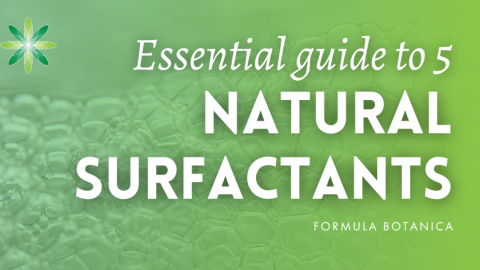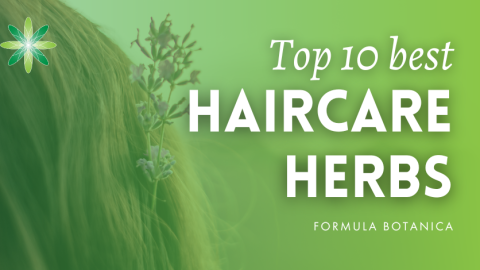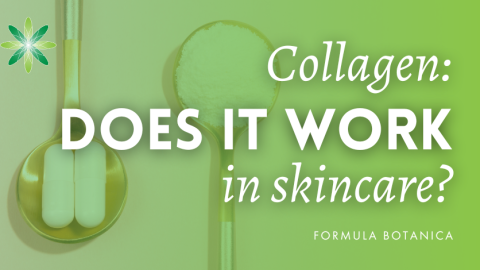What do you do when you don’t have the right natural cosmetic ingredients to hand?
Has inspiration ever struck you only to find that you don’t have the right ingredients? Are you a student of natural skincare and you just cannot find that natural solubiliser from the sample formulations in your course? I am sure you all know what I am talking about. Every organic cosmetic formulator has at some point realised they’re going to find a suitable alternative ingredient for their formulation.
There is always a way to create fantastic products just by knowing what and how to substitute in a formula. If you are new to natural skincare design, you may find it difficult to choose from the huge selection of ingredients. It costs money, you may live in area of the world where raw natural skincare ingredients are not that widely available, you are impatient.
If you are a student of the Diploma in Organic Skincare Formulation at Formula Botanica, you are probably aware that we give you a shopping list to get you started but what about later on in the course? How can you follow the sample formulas if you don’t have the exact same ingredients?
In this blog post we will discuss the basics when it comes to ingredient replacement and what to do to ensure that your new formula works just as well. At least until the new shipment of ingredients arrives…
How to swap Natural Cosmetic Ingredients in your Formulation
Here are our 5 tips to substitute ingredients in your formula:
Step 1: Function
Thinking about an ingredient’s function may sound easy but it isn’t as straightforward as you think. Firstly, check what purpose the ingredient has in the formula. In a lip balm, a wax is used to create an occlusive layer when applied to the lips and it also affects the hardness of the balm. By choosing another wax, you can add the same purpose. Replace butters with butters, oils with oils and so on.
Step 2: Viscosity
When replacing natural cosmetic ingredients in your formulation, you must also always consider the viscosity of the ingredient. This links to our advice above, but we will now take it to the next level. As we’ve just seen you can choose replace like by like – for example replacing one wax with another in a lip balm. So we would like to replace beeswax with candelilla wax to make a vegan lip balm. By doing so you will alter the density of the final product. Why? Because candelilla wax is a harder wax compared to beeswax therefore you won’t need as much.
Let’s take another example; cocoa butter. If you want to make a solid balm bar and you want to use shea butter instead of cocoa, you will not get the right density for this product to work. Consider the consistency and viscosity of your ingredients before you choose them.
Step 3: Solubility
We often see new formulators forget to think about the solubility of their ingredients. Water and oil don’t mix, so you need to make sure that you replace your ingredients with those of the correct solubility.
If you have a water-soluble ingredient in your recipe, choose another water-soluble ingredient to replace it. For example, you cannot replace a glycerite with a CO2 extract in a toner as CO2 extracts are oil-soluble ingredients and will just float on the top of your pretty toner.
Additionally, extracts in a different base will contain very different plant constituents in them due to their solubility. A chamomile extract in a carrier oil will contain its oil-soluble chemical compounds, whereas a chamomile extract in alcohol will contain its alcohol-soluble chemical compounds.
When formulating, always check the solubility of your ingredient first. #CosmeticScience Share on XStep 4: Usage amount
You must always look at the recommended usage amount of your natural cosmetic ingredient, according to the advice provided by your supplier. This can be a blessing or a curse. Unfortunately, if the usage amount for the ingredient you have to hand is different to the one recommended in your sample formulation, then you may need to recalculate the whole formula to accommodate it.
Take CO2 extracts and oil-based macerates as an example. You only need a tiny amount of concentrated CO2 extract to replace a larger amount of carrier oil. So get your calculator ready.
Always look at the recommend usage amount of your natural cosmetic ingredient. #skincare Share on XStep 5: Skin feel and Aroma
These two criteria are often overlooked until the formulator tries out the new product. When you’re swapping ingredients, you must consider how it feels on the skin and how it smells. You might for instance find that replacing prickly pear seed oil with coconut oil makes your lovely facial oil feel too greasy now. Or perhaps the lovely chocolate spa body scrub has a pungent smell because the hydrosol you chose clashes with the yummy cocoa aroma. You can avoid such issues by keeping records of your ingredients in a journal and writing down your experiences with them.
In fact, if we can give only one advice instead of the 5 above, it would be to have a dedicated skincare formulation journal where you can write down your observations about your raw ingredients, your final formulas, your successes and failures as they all add to you becoming a fantastic formulator.
FAQs
What ingredients are in cosmetics?
There are thousands of cosmetic products on the market and therefore potentially thousands of formulations each with their own combination of ingredients. Consumer cosmetic products placed on the market are regulated in most of the world as are some cosmetic ingredients to ensure their permissible maximum levels in various formulations on grounds of their safety, efficacy and stability. Depending on the type of formulation, a typical mainstream cosmetic will contain some if not all of these categories of ingredient: water and/or hydrosols; emulsifiers to bind water components with oils; oils, lipids and esters; surfactants to create cleansing and foaming properties; solubilisers; thickeners like gums; emollients; moisturisers; active ingredients; preservatives; and fragrance. Cosmetic ingredients can be natural, nature derived, nature identical, synthetic or combinations of these.
What ingredients to avoid in cosmetics?
In parts of the world where there is sound regulatory oversight of cosmetic ingredients and permissible levels of certain restricted chemical components in cosmetic formulations, then in theory there should be no need to avoid any cosmetic ingredient legally accepted in products on the consumer market. However, many beauty consumers prefer to avoid some synthetically-produced cosmetic ingredients, such as parabens, PEGs and Propylene glycol for example, and opt to use natural and organic formulations. Responsible natural, organic cosmetic formulators aim to promote the benefits of using natural ingredients rather than point out or vilify synthetic cosmetic ingredients. In some parts of the world, such as the EU, a brand saying their cosmetic products are ‘free from’ certain legally permissible synthetic ingredients would be considered in breach of fair competition. It is up to the individual beauty consumer to decide which ingredients to avoid in cosmetics based on their research, preferences, opinions and skincare and beauty needs.
What ingredients are best for your skin?
Each of us has personal skincare needs, types and issues so it is not possible to say which cosmetic ingredients are the best for skin. However, in recent years, there has a been strong growth in the natural and organic personal care market with market research firm Statista showing the sector likely to increase from almost 34.5 billion dollars in 2018 to around 54.5 billion dollars by end 2027. Clearly, consumers are seeking out natural, organic cosmetics and turning away more from mainstream, often synthetic-chemical laden cosmetics. Botanical and natural cosmetic ingredients offer many advantages for skin. Less processed and refined naturals can be rich in skin-beneficial natural antioxidants, vitamins, minerals, essential fatty acids, phospholipids, bioactive, plant-derived ingredients and more. While it is still possible to be sensitive or allergic to components of natural cosmetic ingredients, this category of personal care has become popular and is increasingly influencing the ethos and formulations of mainstream and big-brand cosmetics companies.
Where can I learn to formulate natural skincare and haircare?
Join us at Formula Botanica, where tens of thousands of students and followers take our free and paid online courses to learn how to formulate organic skincare and haircare for themselves or to sell and also how to set up a beauty brand and business.
FREE TRAINING
Learn how to become an
Organic Skincare Formulator
FREE TRAINING
How to become an
Organic Skincare Entrepreneur
FREE TRAINING
How to become an
Organic Skincare Entrepreneur
Leave us a comment

Timi was a key member of the Formula Botanica team from 2015 to 2020; first as our Education Manager and then as Head of Formulation & Research. You can find out more about the Formula Botanica team here.



























